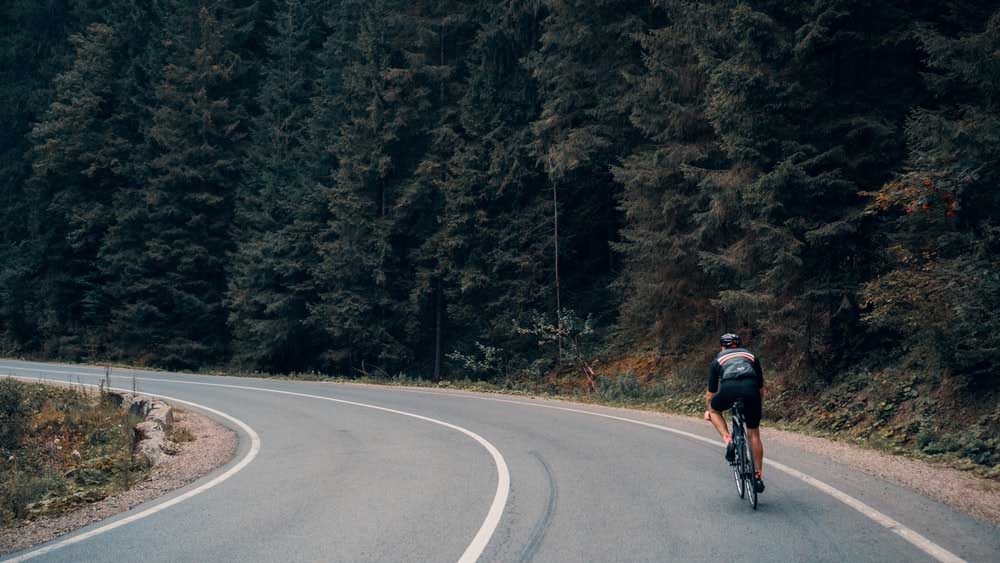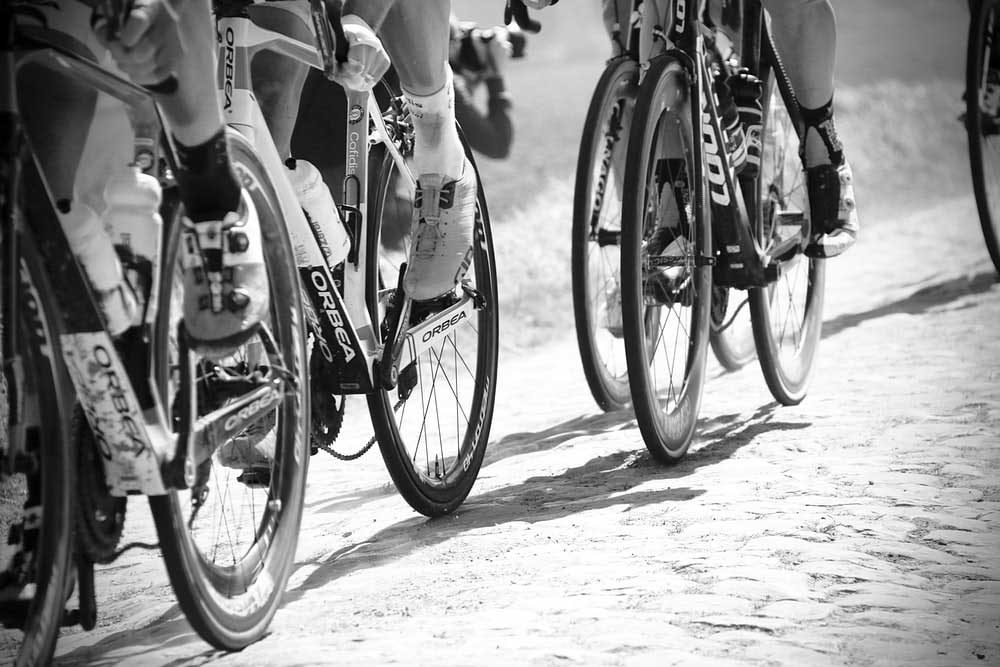Taking part in any sport or exercise brings the risk of injury, and cycling is no different.
It is common for cyclists to jump straight on the bike when going for a ride, whether it’s just a casual ride, a training ride, or even an amateur competition without ever thinking about preparing the body for exercise. The same can be said for afterward: getting off the bike after a ride and going about the day as if nothing ever happened.
This approach can work for some lucky individuals, mostly younger cyclists, but will begin to cause problems as the months and years add up, giving rise to mobility issues, overuse injuries, and imbalances. Cyclists need to take care of their bodies no matter their level, but the more cycling you do, the more time you should devote to taking care of your body.
Some people will ask “How can I prevent injury while cycling?” While most injuries can be avoided simply by having a professional bike fitting, as well as some careful pre-and post-ride care, if you cycle regularly, encountering an injury or painful area is inevitable, but a worthwhile trade-off for the wonderful hobby that is cycling. In this article, we will highlight some of the most common issues experienced by cyclists as well, some methods of prevention and rehab, and what to do before and after your ride.

How is cycling good for me?
As we’ve discussed, there is a risk of injury associated with cycling like any physical activity. However, let’s not forget the numerous physical and mental health benefits of riding your bike. Muscle development
Cycling is an excellent way to develop the muscles in your legs, mostly your quadriceps muscles, calf muscles, and glute muscles. This helps to create a strong system whose benefits will be felt in all aspects of your day, whether participating in physical activity or not.
Cardiovascular system
Cycling, especially moderate-intensity cycling, strengthens the heart, blood vessels, and lungs. Your body’s natural ability to adapt to stress (exercise) means that each time you get on your bike and raise your heart rate, you are making positive changes in your body, increasing the efficiency and strength of each system you use.
Weight loss
For anybody interested in losing weight with the help of exercise, riding a bicycle is a fun and effective way to do it. Cycling at any intensity will burn calories, and increasing your speed or tackling your local hills can really increase that amount. The most important consideration when using exercise to lose weight is choosing something you enjoy, and if a bike ride is that for you, it can be one of the most rewarding activities you can do both for your physical and mental health.Mental & social benefitsMental and social health are very closely intertwined, and physical exercise, especially with others, is a great way to achieve some of those benefits. Exercise reduces stress and anxiety, eases the symptoms of depression, and improves self-esteem. Improved social connection or a sense of community has also been linked to better mental and physical well being; joining a cycling group is a great way to make friends and bring added joy to the activity.
Common Cycling Injuries & Reasons
Seeking the help of a trained physiotherapist to diagnose any sports-related injury is always the best practice. Many symptoms stem from upstream or downstream of a pain site and the muscles, bones, and connective tissues of the body need to be considered as interconnected systems, where one impact or imbalance can cause ripple effects in other parts of the musculature or body.The best way to avoid pain and injuries from cycling starts at the very beginning: ensuring you purchase and ride a bike for your height.
It is also important to have a fitting done with a professional to ensure your handlebars, saddle, seat height (among many other areas) are adjusted according to your specific body. You can check out our article on sizing to help you choose the perfect fit for your next bike.

Knee injury or pain
Knee pain is one of the most common problems encountered by cyclists. The pain is often due to a poor saddle or cleat position, leading to extra pressure on the joints or a repetitive motion in an unaligned position, resulting in pain. The pain can also be simply from overtraining or overuse. A good example of the connectedness of tissues is ‘IT Band Syndrome’ (ITBS). With ITBS, pain, and inflammation usually manifest on the outside of the knee at the insertion of the band into the knee, though the problem often stems from tightness at the hip insertion or a muscle imbalance in the glutes.
There are many sources online which help riders set up their bikes without the use of technology. See proper cleat setup and setting saddle height from Specialized in California (bike fitting heroes!) to help avoid these problems. The use of insoles is also a tactic for tackling recurring knee pain. At times, simply reducing the load (time spent cycling) is adequate to alleviate the problem.
When pain is not associated with fitting, fixing common mobility and strength issues in the hips and glutes can be effective in targeting the root of the pain. A physiotherapist will be able to offer a series of exercises with appropriate progressions for your body to help address these injuries.
Lower back pain
Spending hours in the saddle, especially in more aggressive positions (road bikes), is likely to cause some issues when added to common daily activities such as sitting at a desk for work, watching TV, or sitting down to eat throughout the day. Tight tissue systems, poor posture, and inactive or weakened core muscles are developed throughout our day-to-day lives, and the problems these weaknesses can cause are only exacerbated from hours of sitting on a bike.
To alleviate lower back pain, ensuring your bike is fit correctly will help a lot. Handlebar stem, position, and frame size can lead to overreaching and overextended lower back. Adding abdominal strengthening exercises to your routine is important for both daily life and exercise performance, and will not only help avoid back problems but improve the power of your entire trunk system.Working on tissue mobility of the lower back muscles, as well as upstream in the mid to upper back and downstream in the glutes and hamstrings, will generally relieve some of the symptoms, however, a physiotherapist may need to develop a personalized strengthening routine to fix the cause of the problem if it is recurring.
Walking is an excellent active recovery strategy for back pain, and walking regularly throughout the day is something we should all be doing to balance our time spent sitting. If it is necessary to take a break from cycling to help with lower back recovery, it is important not to replace it with more sitting, which will delay your recovery and contribute to the problem.
Achilles Pain (Ankle)
The Achilles tendon connects the heel to the calf muscles, and it is another common injury or pain point experienced by cyclists. Tightness in the areas above and below the tendon can cause excess pulling on the tissue and result in pain. Poor foot positioning, too far forward or backward, may also contribute to tendonitis or tendon aggravation.
As always, it is key to have your bike fitted correctly to rule out its contributing to any injuries. Overtraining or increasing training load too quickly are also common causes of Achilles injuries, so taking more time to rest between rides, or doing shorter sessions to strengthen the area before progressing, could be sufficient to fix the problem. This problem should be treated quickly to avoid the possibility of chronic pain so if it persists, seek the help of a professional.
Hands & wrists
Extended time in the saddle can lead to pain in the hands and wrists, especially on flat handlebars since there are fewer positions available to grip the bars compared to drop bars.Changing your hand position frequently during a ride is important for relieving the pressure on the joints.
Riding with a slight bend at the elbows acts as a shock absorber for any impacts or rough surfaces. If your bicycle is too small, you may be putting excess pressure on the handlebars, so having the right size frame and fitting it correctly will make sure that your weight is distributed correctly between the saddle and handlebars, giving your body the best chance of preventing this injury. If pain persists, decrease your time spent riding and seek the help of a medical professional.
Read more bike tips:
E-bike Market Trends, Analysis and Challenges 2021
Do you need a license to ride an electric bike
Summer Weather Tips for Your Electric Bike Battery
7 Reasons You Should Go For Mountain Bike Disc Brakes
Neck pain
Pain in the neck muscles or upper spine results from the tightening of neck muscles which create added pressure on the neck and spine. It is generally due to the positioning of your body on the bike. Raising your handlebars slightly and creating a less aggressive riding position overall can help with neck problems. Any persistent neck pain in the days following a ride should be treated quickly.
Rest, heat and some gentle neck mobility exercises can help alleviate some of the discomfort experienced after a long ride. It is important to note that an unusually long ride or coming back after some time without riding is likely to cause discomfort as the body has lost its conditioning.
If you are interested in motorized bike and want to know more, you could browse previous articles or visit our Official Website, also choose to leave your message below. If you are interested in electric bike, you can contact us. www.zhsydz.com
 Shuangye ebike
Shuangye ebike
